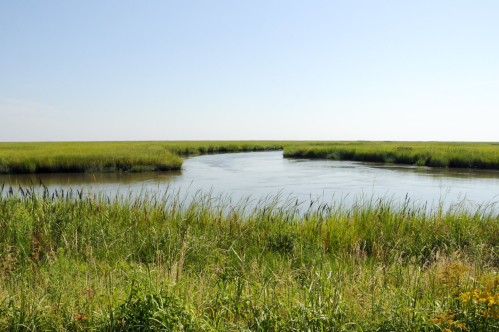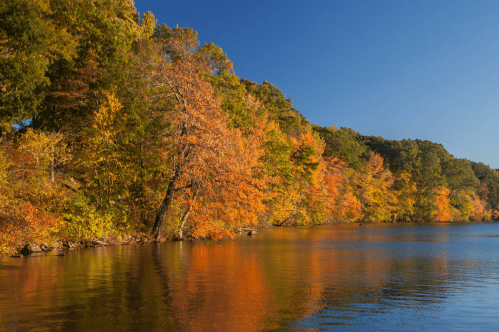Like much of Greater Cleveland, the Cuyahoga River has earned a rather negative reputation. Its infamous river fire of 1969 led to much-needed environmental legislation and change, and yet that image of a burning river seems to have permanently singed itself into the minds of Ohioans and even out-of-staters. The truth is that the river has quite a varied history, but every moment in it is truly fascinating.
1. Clevelanders fought a battle over one of its early bridges and it permanently divided the city into an East and West Side.
The first permanent bridge on the Cuyahoga River was established in 1836, and it actually inspired quite a bit of tension. It made a floating bridge that allowed traffic to pass over the river and into Ohio City less than preferable, which, in turn, altered Ohio City's economy. For the full story, click here.
2. The shape of the Cuyahoga River has changed greatly over the years.
Whiskey Island (pictured above) is a peninsula that was created when the river's course was diverted. The mouth of the river moved to its present location in 1827, meaning the landscape we are familiar with has changed significantly in fairly recent years.
3. The Cuyahoga River has actually caught fire an astonishing 13 times.
As if our one famous fire wasn't bad enough, let's throw a dozen more fires into the mix. While each fire was a tragedy in its own right, it was not uncommon for polluted waterways to ignite in the Industrial Age. Many considered it to be a necessary consequence of industrialization. The worst fire is actually one that took place in 1952 (pictured above). A photo from this incident was the one pictured on the cover of the 1969 Time Magazine when the more recent blaze captivated the world.
4. There are a multitude of abandoned bridges that line its expanse.
This bridge is just one example of many places in Cleveland that Mother Nature is reclaiming.
5. The Cuyahoga is an infant glacier river, meaning that it is one of the youngest U.S. rivers to be formed by a retreating glacier.
The river is roughly 13,000 years old. It looks great for its age!
6. "Cuyahoga" is a word that was blended from various local indigenous languages.
As you may know, Cuyahoga roughly translates to "crooked river."
7. Along the entirety of its course, the Cuyahoga River flows both North and South.
The river extends 100 miles, but it drains a land mass that is nearly eight times larger than that!
8. When Congress passed the Clean Water Act in 1972, many saw the infamous Cuyahoga River fire of 1969 as one of their deciding factors.
Today, the Ohio EPA regulates and corrects pollution in the river.
If You Only Have One Day to Visit This Small Town in Maine, Here’s Everything You Absolutely Can’t Miss

If You Only Have One Day to Visit This Small Town in Massachusetts, Here’s Everything You Absolutely Can’t Miss

If You Only Have One Day to Visit This Small Town in Maryland, Here’s Everything You Absolutely Can’t Miss

9. The presence of bugs in and around the river allude to its health.
As you probably know, the yearly mayfly invasion is a great indicator of Lake Erie's health. These bugs also emerge from the river and surrounding bodies of water, and despite how creepy it is to see the city covered in insects, their presence proves that the area is healthy enough to support a significant biological population.
10. The unpredictability of navigating the Cuyahoga River helped lead to the creation of canalways.
The early canals - ancestors to our local highways - once fueled our region's economy.
Though the Cuyahoga River has earned a rough reputation, it has quite the story to tell - and one that is far less negative than most people realize. Which factoid surprised you the most? Let us know in the comments below.
For more local learning, check out these awesome Cleveland-centric fun facts.
Subscribe to our newsletter
Get the latest updates and news
Thank you for subscribing!




























